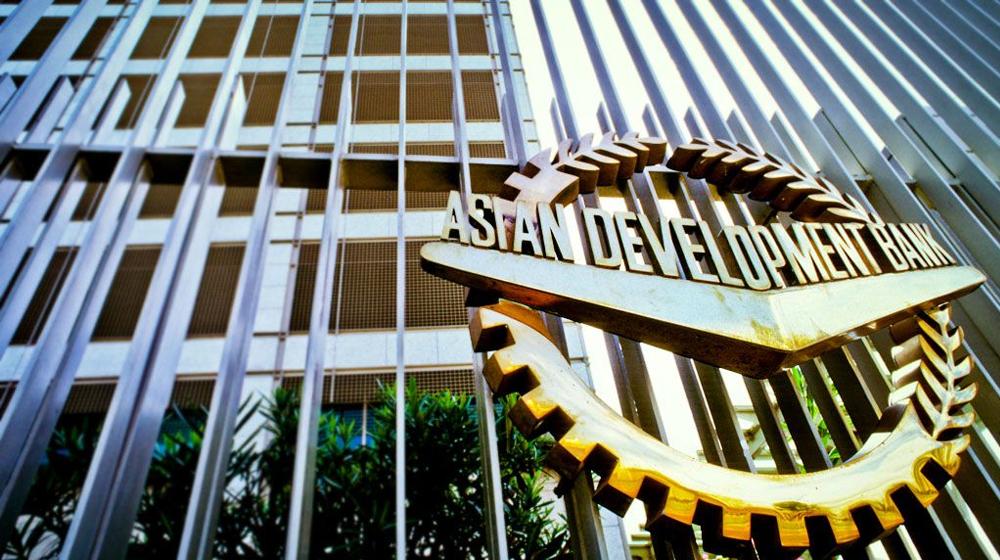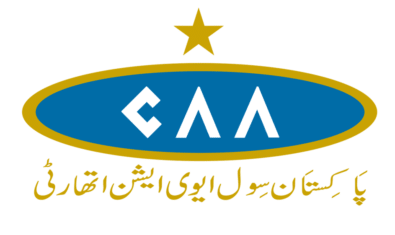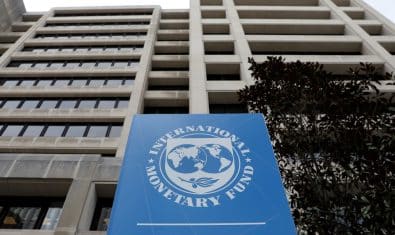The Independent Evaluation Department (IED) of the Asian Development Bank (ADB) has rated the $1 billion worth ‘Economic Stabilization Program’ for Pakistan as ‘successful’.
The IED stated in its validation report that the special policy-based loan (SPBL) of $1 billion was aimed at addressing the severe macroeconomic crisis that Pakistan had faced in 2019.
To support the implementation of the reform program, the ADB Board of Directors had approved the SPBL on 6 December 2019. The loan agreement became effective on 9 December 2019, and was closed on schedule on 30 June 2020. The $1 billion loans funded through the ADB’s ordinary capital resources were fully disbursed.
The validation assesses the program as ‘successful’ based on the following:
- A relevant design of the program. With Pakistan’s economy registering severe imbalances, the results chain that connected with the policy measures to correct them was plausible, and the prior actions were effectively directed at reducing the imbalances. The indicators measured the key variables that were necessary to begin the restoration of equilibrium although the design program was not innovative.
- An effective rating based on the realization of all the SPBL outcome targets and completion of all the policy actions required under the program, both with respect to moving toward macroeconomic stability and structural adjustment.
- The program was efficient; $700 million ready for COVID-19 vaccines. There were no meaningful delays in completing the policy actions, and the design supported the EFF in accordance with country and ADB policy priorities.
- The program was likely sustainable, based on the Pakistani government’s ongoing commitment to reformation, although uncertainty remains as a result of the COVID-19 crisis.
The report detailed that structural problems had also contributed to macroeconomic imbalances, such as state-owned enterprises (SOEs) accumulated losses that had resulted in an outstanding stock of SOE debt equivalent to four percent of the GDP by the end of the fiscal year 2018.
The SOEs in the power sector had low productivity, and a lack of investment had resulted in high system losses, and had negatively affected the private sector’s competitiveness. Urgently needed reforms, such as increasing electricity tariffs and eliminating the government payment arrears backlog to energy companies had been neglected, which had all contributed to the crisis.
The International Monetary Fund (IMF) had granted a loan under the Extended Fund Facility (EFF) amounting to SDR 4,268 million (nearly $6 billion). The ADB had supported it through a $1 billion loan and was part of a large rescue program amounting to $38.6 billion over three years.
The ADB had provided substantial support in preparing the EFF program, utilizing its history of policy engagement that had aided many sectors of Pakistan’s economy, in both its lending and technical assistance programs. The report also mentioned that the ADB had developed a comprehensive set of reforms with the IMF and the World Bank that would address the economy’s underlying imbalances.
The reform program was directed to:
- Strengthen exchange rate management;
- Improve public financial management (PFM);
- Enhance the existing social protection programs to limit the social impact of the crisis.
The report noted that exchange rate management would be strengthened through the State Bank of Pakistan (SBP)’s adoption of a flexible market-based exchange rate policy that would allow for the build-up of foreign exchange reserves.
The PFM would be improved by:
- Passing new legislation with respect to managing public finances;
- Setting fiscal targets to sustain fiscal consolidation;
- Approving a budget reflecting the EFF’s fiscal targets;
- Strengthening the fiscal performance of SOEs, including (a) Setting tariff adjustment targets for electricity and gas, (b) limiting sales tax exemptions, and (c) improving excise tax collections. Social protection would be enhanced through more effective social cash transfers and developing a financial inclusion strategy for women. The PCR had rated the program as ‘highly relevant’ at both appraisal and completion.
The rating was based on the urgent need to achieve a sustainable fiscal position and improve external imbalances. The objective had remained highly relevant at closure. The PCR had stated that although the conditions, with one exception, were part of the IMF’s program, the ADB provided valuable inputs based on its knowledge of Pakistan. The reform areas identified under the SPBL were considered to be relevant and consistent with Pakistan’s development objectives.
The PCR had stated that the program’s three pillars supported sustained growth and provided a foundation for improved resource allocation, and restored macroeconomic stability while strengthening social protection to alleviate the impact of the crisis on the poor and vulnerable.
The program’s results chain appeared to have been plausible. When the program was designed, Pakistan’s economy had serious imbalances from economic policies that were not aligned with economic fundamentals. These included running large fiscal deficits, overly accommodating monetary policies, an exchange rate that was out of equilibrium, and poor debt management policies. The tax administration was weak, the business environment did not support investment and entrepreneurship, and the SOEs were inefficient and generated large losses that drained the budget.
The foreign exchange reserves had fallen to critically low levels. The EFF and the SPBL, in conjunction with other development partners, had supported the rescue effort. The program’s three pillars addressed these imbalances. Moving to an exchange rate policy would reduce the drain on international reserves, where the exchange rate changes in response to market forces to defend a disequilibrium exchange rate.
Improving PFM through more efficient tax collection, the closing of loopholes, and increasing electricity and gas tariffs to reduce the losses of SOEs in the energy sector limits the budget drain. However, the program did not address the issue of arrears, nor the inefficient SOEs that were outside the energy sector.
The 11 prior actions under the SPBL were primarily the EFF prior actions, although policy measures were coordinated among development partners. Of the SPBL’s 11 policy actions, 10 consisted of EFF prior actions. The additional action was that the Parliament would approve the Public Financial Management Law to improve the allocative efficiency of public resources.
The outcome indicators were:
- The current account deficit, as a percentage of GDP, would decline by at least two percentage points by FY2020 against a baseline deficit of 4.8 percent of the GDP in the fiscal year 2019;
- The primary budget deficit, as a percentage of the GDP, would be no more than 0.4 percent by FY2020 against an FY2019 baseline of 3.5 percent;
- The energy SOEs would generate an additional 150 billion Pakistan rupees (PRs) by FY2020 in revenue against an FY2019 baseline of Rs. 1,358 billion;
- At least 90 percent of Benazir Income Support Programme (BISP) beneficiaries had received cash transfers by FY2020 through the biometric verification system against a 2018 baseline of 61 percent.
All the policy actions and outcome targets had been fully achieved before the SPBL’s approval. The key policy actions supporting the program were:
- Moving to a flexible market-determined exchange rate;
- A formal memorandum of understanding between all the federal and provincial governments regarding fiscal targets that were consistent with the macroeconomic framework specified in the EFF;
- The approval of a budget consistent with the EFF targets;
- An automatic adjustment in electricity tariffs;
- A comprehensive debt reduction plan for the SOEs;
- The approval of a Financial Management Law for improved allocative efficiency of public resources;
- The passage of a law to eliminate legal authorization for executives to grant sales tax exemptions and concessions;
- The finalization of the SBP’s banking contracts;
- The launching of a financial inclusion strategy for women.
The PCR reported that all these policy actions had been fully achieved before the end of the 2019 calendar year.
It had also rated the SPBL as ‘efficient’. When no economic internal rate of return could be calculated, as was the case with the PBLs and SPBLs, the rating was based on the process efficiency of the inputs, resulting in the achievement of outputs and outcome, and whether the intended outcomes had been achieved within the program period. In Pakistan SPBL’s case, the program had been prepared expeditiously despite the need to coordinate with a range of development partners.
The PCR had reported that in February 2021, the government and the IMF had agreed on an additional package of measures as part of the second to fifth reviews of the EFF that allowed for an immediate purchase equivalent to $500 million. The IMF noted that the structural reform agenda continued to advance, including implementing energy sector reforms, the submission of a new SOE law to the Parliament, and the publishing of key SOE audits.
However, some well-advanced reforms had been delayed, which included general sales tax reforms and the update of the BISP beneficiary’s database. The PCR had incorporated some of the IMF’s analysis, but it was more optimistic regarding sustainability.
In the EFF’s 2021 review, the IMF points out that although the Pakistan authorities have made substantial progress under the IMF’s EFF-supported program, and policies have been at the center of measures to support economic adjustment, “a second COVID-19 wave is unfolding, triggering exceptionally high uncertainty and downside risks”.

























